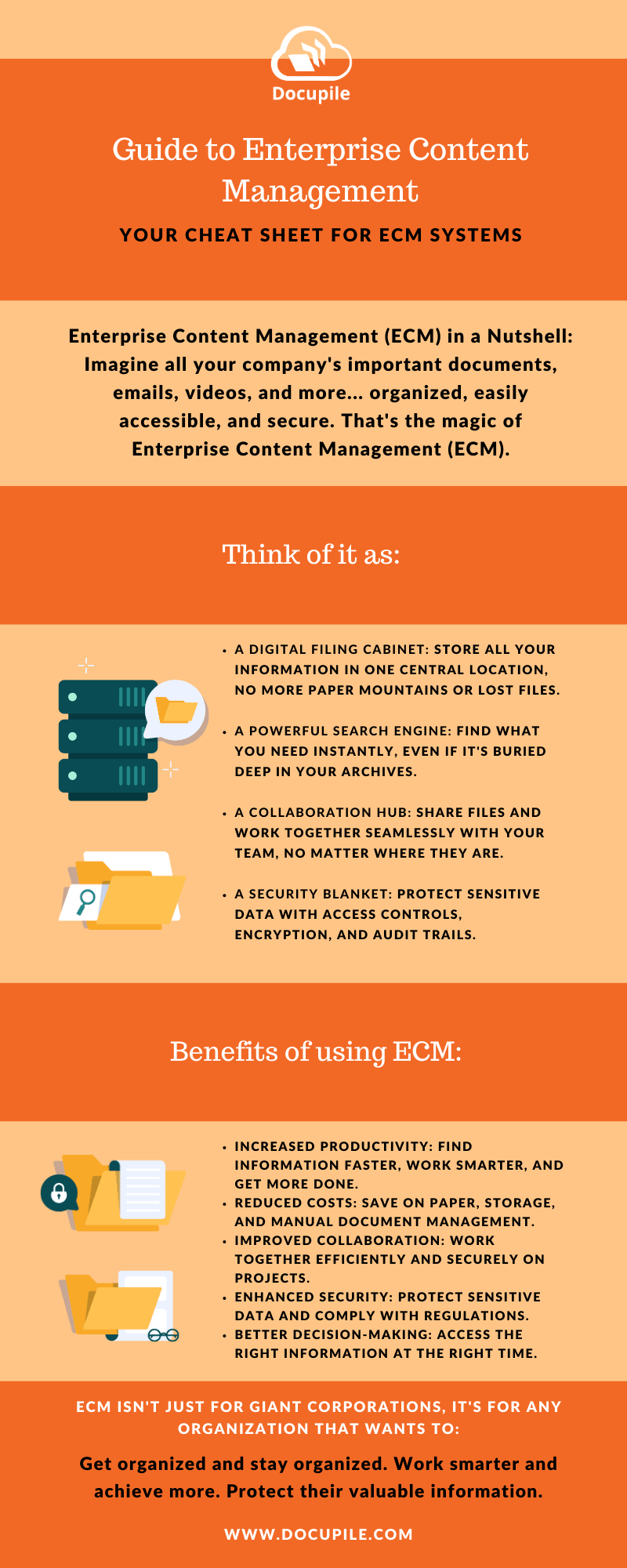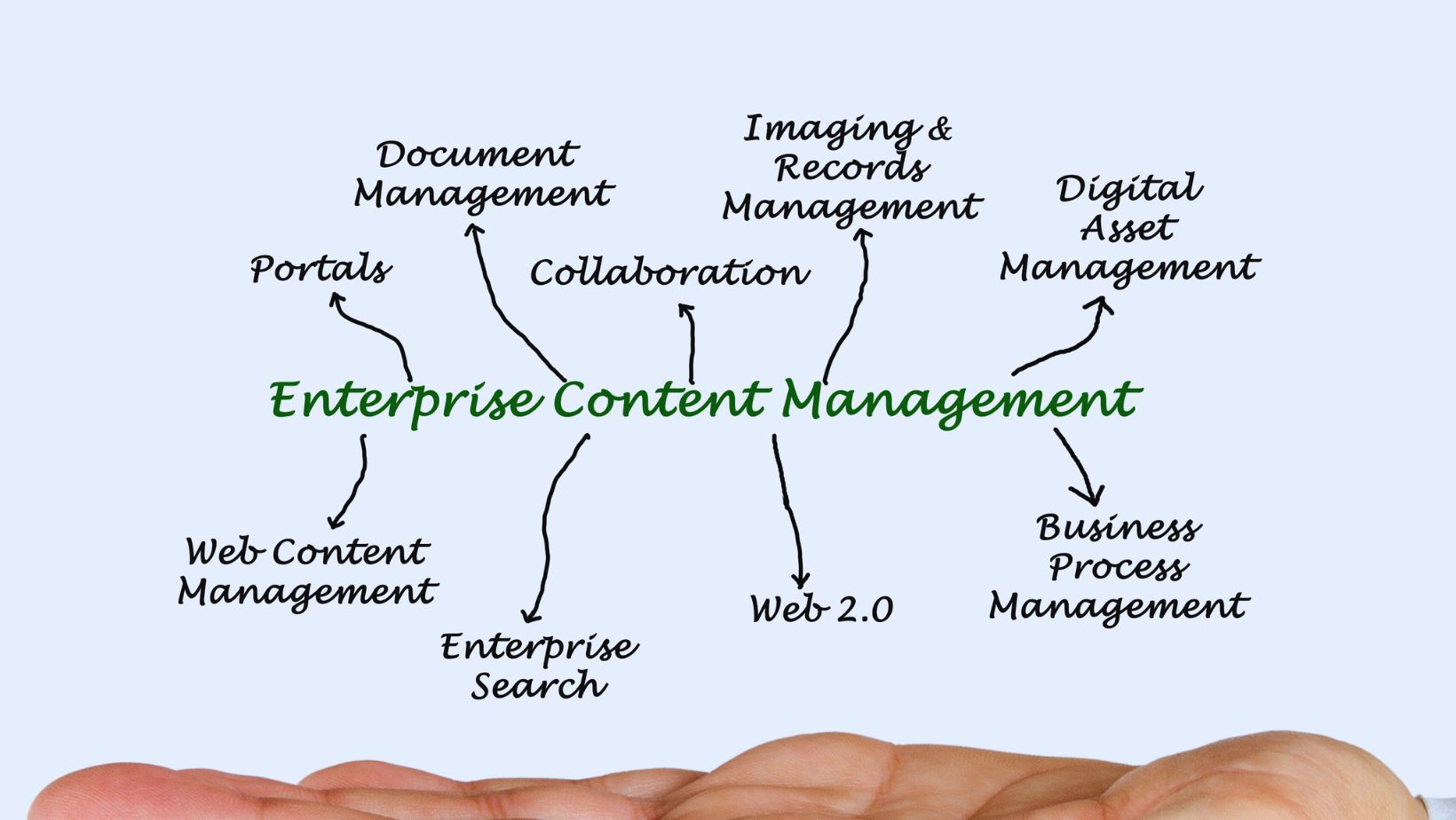Definition: Enterprise Content Management
Enterprise Content Management (ECM) Systems are a set of strategies, methods, and tools used to capture, manage, store, preserve, and deliver critical information within an organization. They are the powerhouse behind how organizations manage, store, and deliver critical information and documents essential to their daily operations. Covering a spectrum of content types, from documents and images to videos and emails, best cloud ECM software forms the backbone of efficient content management. This comprehensive system encompasses key components like document management, workflow automation, records management, and more, providing businesses with a centralized solution for their content-related needs.
Overview:
Infographic – ECM Guide

What is ECM & What Does it Do?

ECM stands for Enterprise Content Management. It refers to a set of strategies, tools, and processes used by organizations to manage, store, preserve, and deliver information and documents related to their operations. This can include a wide range of content types, such as documents, images, videos, emails, and more.
Here are some key components and aspects of the best enterprise content management software:
Why Enterprise Content Management is a Game Changer?
In a nutshell, ECM is like a behind the scenes hero for businesses. It keeps their information organized, secure, and easy to manage. It’s the ultimate sidekick that helps everything run smoothly and efficiently, saving both time and money!
Examples of Enterprise Content Management Systems?
An ECM (Enterprise Content Management) system can greatly benefit your company in various ways. Here are some examples:
In summary, an ECM system can significantly enhance various aspects of your company’s operations, from accounts payable and customer service to off-site work and staffing processes. Additionally, it provides robust tools for maintaining information security and compliance with industry regulations.
Conclusion
In a dynamic business landscape, ECM systems emerge as indispensable allies. They not only smooths out operations by easily managing documents, automating workflows, and ensuring compliance but also enhance access, security, and cost effectiveness. With their ability to secure critical information and ensure its availability in times of need, the best enterprise content management software stand as vital tools in modern organizations’ arsenals. In essence, ECM is the corner stone of a smooth and organized approach to managing the vast volume of information that fuels companies in today’s fast paced world.




